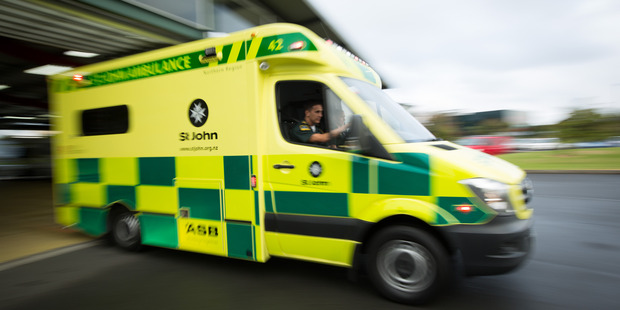
Experts warn it was putting patients at risk and tied up ambulances needed for other callouts, and another leading emergency doctor says it was now common practice at some New Zealand hospitals.
Known as "ambulance ramping'' or "prolonged off-loading'' overseas, the practice involves paramedics being instructed to keep patients waiting in ambulances due to overcrowding in emergency departments.
The ambulances are taken off-line and are unavailable for call-outs.
Health Minister David Clark confirmed he was aware of the problem happening at some of the country's busiest hospitals, and blamed it on underfunding from the last Government, the New Zealand Herald reported
But St John said while significant delays do happen, it had processes in place to minimise the effects, such as diverting non-urgent patients to medical clinics.
The Herald understood the practice - dubbed "prolonged off-loading'' or "ambulance ramping'' in Australia - is happening daily across the country and has been getting progressively worse in the past five years due to EDs being at "crisis point''.
Dunedin Hospital emergency department clinical lead John Chambers said the practice of ambulance ramping had not yet happened in Dunedin, but the department had been close to it in the past week.
"We've been pretty close at times, particularly in the last week.''
"And sometimes the ambulance officers are held up for some time inside the department, waiting to hand over patients.
"So far we haven't had to back people up into the ambulance, but I know it is happening at other hospitals in New Zealand.''
Dr Chambers said efforts were underway to create space the emergency department for clinical use to avoid patients waiting in ambulances.
"We're trying to see if we can develop other areas adjacent to the emergency department ... for clinical use to dry and avoid this happening.''
Australasian College for Emergency Medicine president and Waikato Hospital emergency doctor John Bonning told the Herald it was now common practice in New Zealand for hospitals to contact an ambulance en route to the hospital to request it went "offline'' for up to two hours while they cleared space in ED.
Comments
Its been an interesting LEAP FROGGING that i have watched since I left as a paramedic.
The ambulance service in the 80s wanted to provide better patient care > the hospitals thought "great" we can cut back on our role > the ambulance role then had to increase > the hospitals then had the attitude that patients must not arrive unless certain high level of care is already implemented > hospitals now cut back more etc etc.
The sad fact is that the ambulance service is spending far too longer time on scene and tying up several ambulances just for one patient - whilst the public cannot access an ambulance as a result. The attitude is give the best care to the worst at the expense of the others. But occasionally even serious emergencies cannot get a response at all now. Ambulance control will often not dispatch an ambulance at all or leave the file sitting on the computer until they are ready.
Ambulance care needs to go back to the basics of primary service delivery. Rural areas don't need advanced level of care. They need to get to hospital quickly.
Hospitals need to provide to emergencies that suddenly get presented.
You cannot substitute. Its simple.












